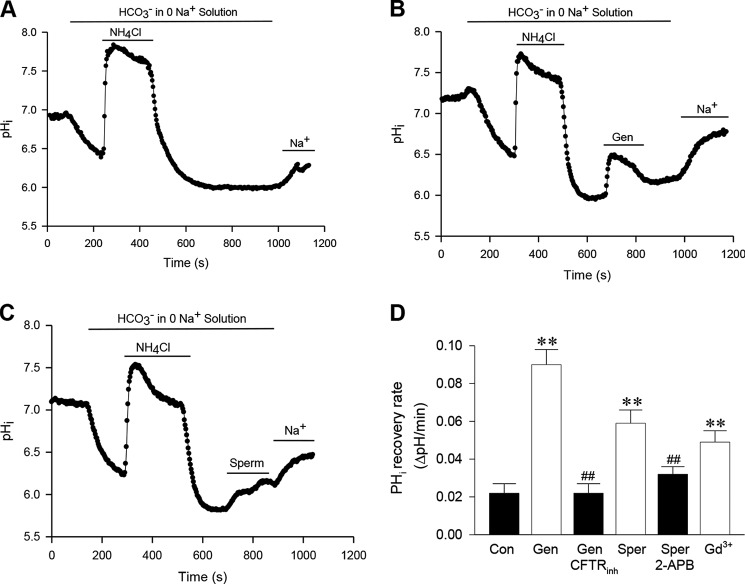FIGURE 6.
Effects of different CaSR modulators and ion channel blockers on HCO3− fluxes in SCBN cells. A, control time course of pHi changes induced by NH4Cl in Na+-free/HCO3− solution. Treatment of cells with 30 mm NH4Cl in the solution caused the pHi first to increase and then to decrease when the NH4Cl was washed out. The cells remained acidic, and the pHi was relatively stable in Na+-free/HCO3− solution, but the pHi began to recover when the cells were returned to NaCl/HCO3− solution (Na+). B, genistein-induced HCO3− fluxes through CFTR channels. The time course of pHi changes in SCBN cells was similar to the control in A. However, after the NH4Cl was washed out, genistein (Gen, 50 μm) was added to the cells acidified in Na+-free/HCO3− solution, and the pHi began to recover, but further recovery occurred after adding back NaCl/HCO solution (Na+). C, spermine-induced HCO3− fluxes through CFTR channels. The time course of pHi changes was similar to B, but spermine (Sper, 1 mm) was added to the cells acidified in Na+-free/HCO3− solution. D, summary data showing the effects of different CaSR modulators and ion channel blockers on HCO3− fluxes in SCBN cells. CFTRinh-173 (10 μm), 2-APB (100 μm), and Gd3+ (0.5 mm) were applied to the experiments. Values are expressed as mean ± S.E. of 40–50 cells for each group. **, p < 0.01 versus control (Con) in A; ##, p < 0.01 versus their corresponding activators in B and C.

